As I stand on the bridge over the thundering railway, a maze of corrugated shacks, blue tarpaulin and dark alleyways lies beneath me, stretching out as far as the eye can see. A multicoloured sign fabricated from various pieces of scrap corrugated metal reads ‘Welcome’.
Welcome to Dharavi Slum, Mumbai
Mumbai is a true megalopolis; one of the most populous cities in the world, with over 20 million people. It is the richest city in India and holds the largest film industry in the world.
As Mumbai is the financial and commercial capital of India, it attracts migrants from all over the country also looking to make their fortune. Sadly, the reality is that many of these people who flock from the countryside looking for a better life end up living in one of the city’s 2000 slums.
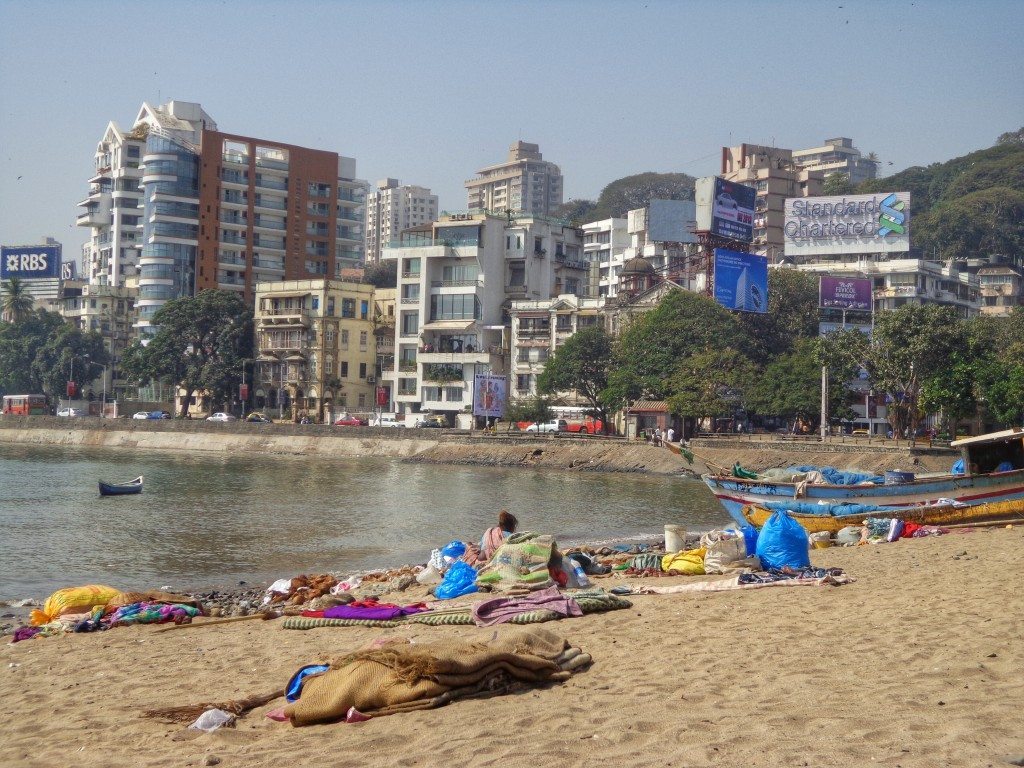
Taking a Dharavi Slum Tour
With over half of the city’s population living in slums and shanty towns, slums are an integral piece of the fabric that makes up Mumbai. So, in an attempt to try and understand more about the city we took a Dharavi slum tour. There is a no photo policy on the tour, I could only take photos from the bridge by the entrance, so please excuse the lack of photos.
Slumdog Millionaire
Dharavi is the largest slum in Asia with over a million people living there and the 2008 film Slumdog Millionaire was based here in Dharavi. Although Dharavi is technically a slum (because it is an unplanned development) it is a fully functioning community which has changed my perceptions on slums and poverty. Unlike other slums the residents and businesses do have access to water, electricity and some public toilets.
There is much more to Dharavi than poverty. It is an inspiring story about the ambition, ingenuity and hard work by people living in the harshest conditions. Dharavi houses about 10,000 businesses that export worldwide and make an annual turnover of around $665 million dollars per year.
As we weaved our way through the narrow alleyways we saw people making pottery, baskets and soap. We saw ladies making poppadoms and laying them out in the sun to dry. Small, dark factories were a hive of activity: baking bread and cakes, embroidering textiles and tanning leather. The cakes they make are sold all over Mumbai; the leather is apparently used by Gucci.
A Dangerous Business
Dharavi also handles waste from all over the world and recycles everything from plastic bottles, bags, pens, cans, cardboard, computer parts, car batteries, wires, metals, paint cans and oil drums. Women crouch in filthy shacks, sorting and picking through the bags of trash strewn out on the floor that the rag pickers bring in from the city’s dumps.
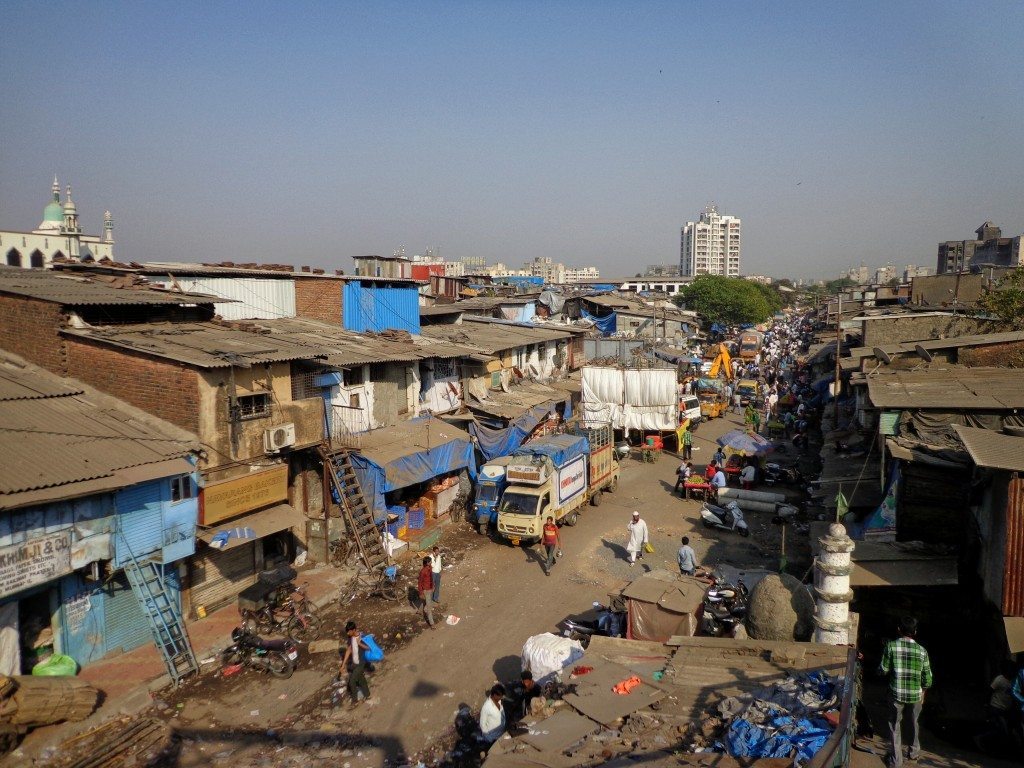
The buzz of industry around Dharavi is inspiring. Everything here is recycled; nothing is wasted, even soap used by guests in fancy hotels is collected, recycled and reused. All this certainly serves an important environmental purpose in a world that is literally heaving under the weight of rubbish.
All around me the sounds of hammering and drilling wafts out, along with the smoke, from dark shacks. There are also heavy industries and factories here within the maze of corrugated shacks. I found it difficult to come to terms with the shockingly dangerous conditions of the recycling and heavy industries that people were working in among the open sewers, rubbish and haphazard electricity cables.
I watched people recycling paint and cooking oil tins by putting them in a fire to burning out the paint and oil residues. Choking smoke stung my eyes and make me cough as it bellowed out of the dark corrugated shacks as it released poisonous gases before the men cleaned and repainted the tins to sell on. The smell of toxic chemicals and sewage lingered in the air alongside the smoke and dust.
Some of the shacks were even smelting down metal and making the machinery to be used in the recycling process. Some workers also live and sleep in the factories to save money and provide security as many of the factory owners now live outside the slum. They earn a daily wage of about 100 or 150 rupees (£1.40 – £1.90) a day and life expectancy is only 50 years old.
An Optimistic Community
There is also a fully functioning, sociable residential area with communities of different faiths, families, shops, schools and public toilets. A wide street serves as a busy thoroughfare thronging with people, smartly uniformed children on their way to school, motorbikes, shops, food and clothing stalls.
You can feel an optimistic and determined community spirit despite the filthy conditions. Some of the houses are well built, painted and maintained but the majority we saw were single room, concrete cell like, dwellings housing extended families. As we walked further through the labyrinth the sewage drains and the street became one, the alleyways became ever narrower until they blocked out the light and were barely passable.
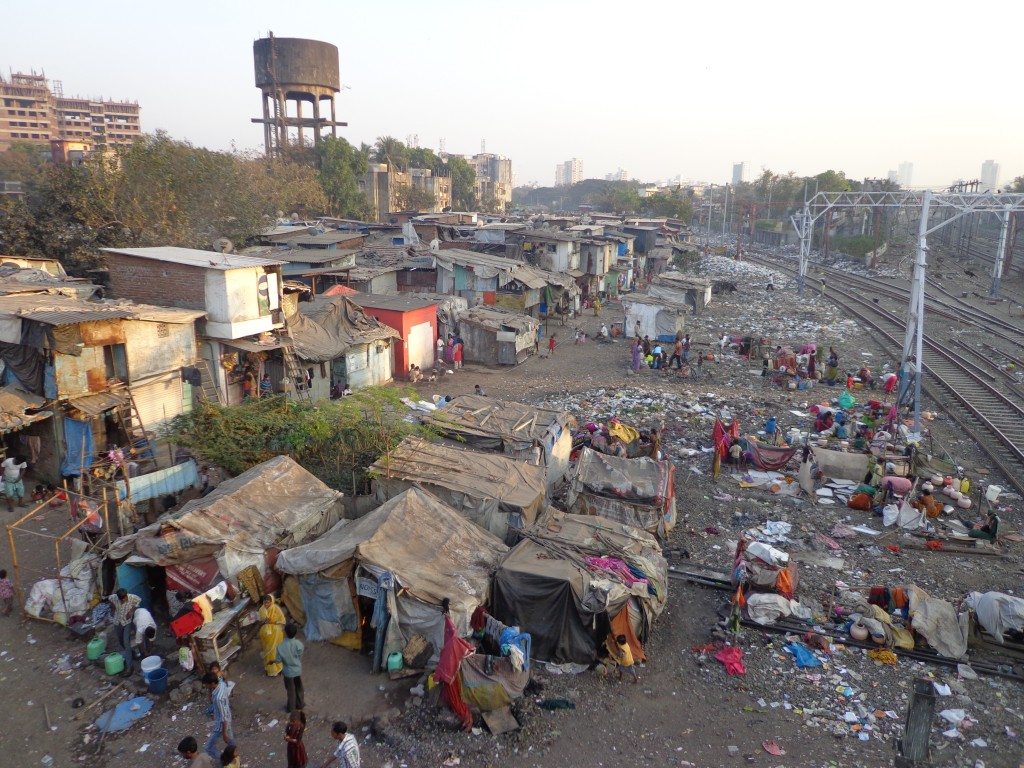
Dharavi is situated in between two suburban train lines in the middle of Mumbai. This is prime real estate and new flats overlook the the maze of corrugated shacks. The guide told us that the government had cleared some of the slum and given residents free apartments. However, he said that many people actually choose to live in the community where they had grown up and had rented out these new apartments. Some residents work in white collar jobs outside the slum and own televisions, mobile phones, computers and even cars but prefer to remain in Dharavi.
Despite the dirty conditions, hardship and the dire smell of most of Dharavi the one thing that remained constant were the smiling faces of the children and the coy but kind looks from the women. Even the men at work in disgusting and dangerous conditions looked happier than the average English McDonald’s employee!
Contradicting Emotions
I found the Dharavi slum tour very emotional and my first couple of days in India very challenging. I’ve never before experienced feeling so many intense and often contradicting emotions all at the same time. Dharavi was depressing and inspiring, beautiful and disgusting at the same time.
I found the way that these people dealt with their situation incredibly humbling and it changed my attitudes to poverty. Most of the people who live in this slum work unbelievably hard. They use incredibly inventive ways to survive and make a living from nothing. The way that people here try to lift themselves out of poverty by working hard and recycling everything is amazingly inspirational.
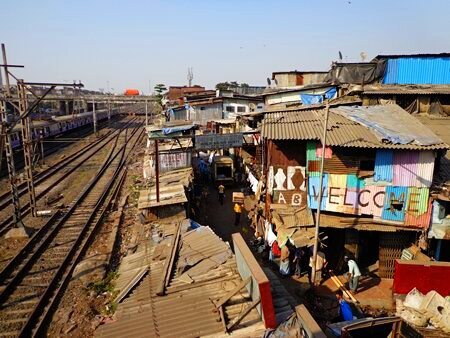
Want to Visit Dharavi Slum?
Of course Dharavi isn’t a tourist attraction and you shouldn’t wander into a community taking photos. But if you want to understand more then taking a tour of Dharavi slum is a great way to learn, challenge your perspectives, and give something back to the community.
I organised the Dharavi slum tour through the guest house that I stayed at – Travellers Inn Mumbai. The social enterprise that conducts the Dharavi slum tours is called Reality Tours, it costs 750 Rupees and Reality Tours give 80% of the profits back to the people who live and work in Dharavi and you are not allowed to take photos in Dharavi (hence the lack of photos in this article – I was only allowed to take photos from the bridge before entering)
Read More Mumbai Travel Blogs:
Have you visited a slum? How did you feel about it?
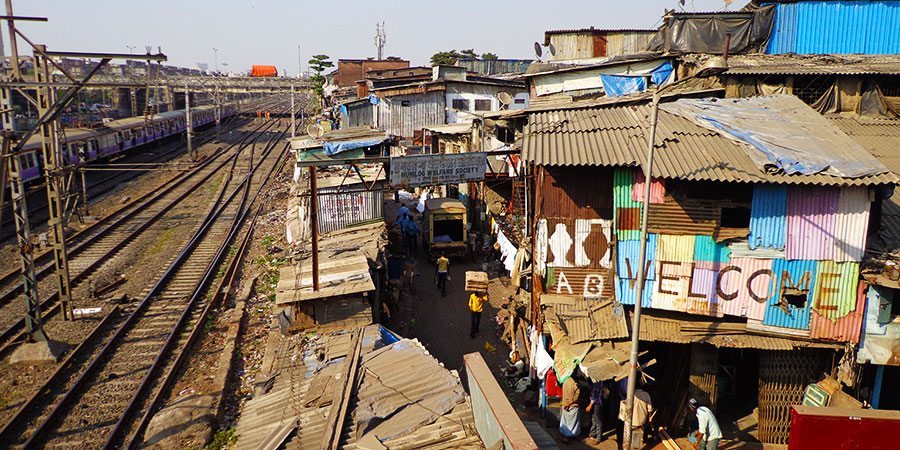
1 comment
[…] the slums of Dharavi to modern and trendy Bandra, to the crumbling colonial architecture in South Mumbai, nowhere else […]